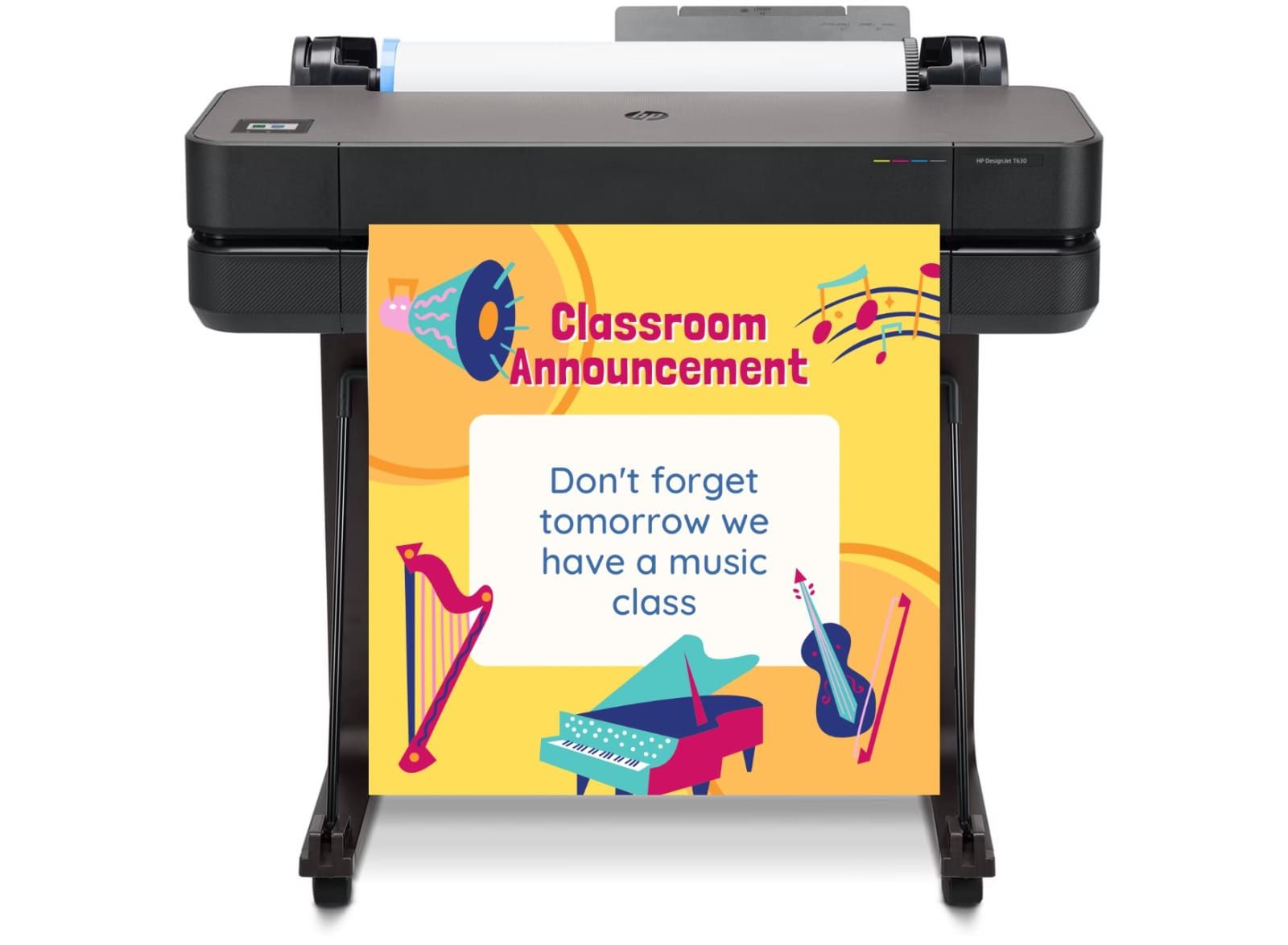The Versatility and Impact of a Poster Printer Machine in Educational and Creative Spaces

In the modern fast-paced visual society, the market of large format prints, such as posters, banners, educational charts, signage, and display, is expanding at an alarming rate. A poster printer machine has become a vital tool for schools, nonprofits, community centers, creative studios, and event organizers. In contrast to regular desktop printers, poster printers allow users to create high-quality and large scale images in the company, making the design, time, and expenses more flexible and controlled.
Understanding What a Poster Printer Machine Can Do
A poster printer machine is a specialized large-format printer designed to handle oversized print media--typically widths of 24, 36, 44 inches or more. It has the ability to print high-resolution on paper, vinyl, banner material, and even on specialty substrates.
The machines are designed to ensure high color fidelity, sharpness and longevity, thus maximizing its use both indoors and outdoors. Such characteristics as numerous ink channels (CMYK with optional light inks or spot colors), automated media handling, printing borders, and in-built color management systems are common. Direct cutting, lamination or roll-to-roll feeding is also supported by some of the models. These capabilities make poster printers more of an instrument of production and not just an oversized office printer.
Uses Education, Events and Design.
One of the strongest use cases for a poster printer machine lies in education. Individual schools, colleges, and educational institutions are able to print classroom charts, inspirational display materials, event signage, science fair displays, banners, and artwork on command--without the necessity of outsourcing.
This in-house capability saves on the turnaround and logistical friction. In the events and exhibitions sector, having a poster printer machine on site or nearby means faster iterations, last-minute edits, and more creative freedom. It is also useful to graphic designers, visual artists, and print shops, where the equipment can serve as a canvas in which to experiment--printing limited edition pieces, galleries prints, murals or purpose-specific posters. In addition, such printers can be used by nonprofits, municipalities, and cultural organizations to create awareness campaigns, directional signs, community exhibits or displays, or similar materials with minimal effort.
Choosing the Right Poster Printer Machine: What Matters
Selecting the right poster printer machine depends on use case, volume, and desired output quality. The primary criteria to consider are the following:
Print Width & Size Capacity
Select the width of the machine that fits your requirements- 24, 36, 44, or even 60+. In case the size of banners you want to use is bigger, the increase in the width will be flexible.
Ink & Color Quality
Machines with a wider color gamut, light inks or spot color support provide more accurate color, particularly in gradients and skin tones.
Resolution & Sharpness
Find machines with 1200 dpi (or more) to produce a clean text and fine detail, in particular when chart or diagram printing is required.
Media Versatility
Check compatibility to a variety of substrates, standard poster, vinyl, adhesive media, exhibition canvas, backlit film etc.
Workflow Software Integration.
Prodrome is enhanced with smooth workflow, color management tools, RIP software, and print queue management. Connection with design software (e.g. Adobe, Corel) is an advantage.
Durability & Maintenance
Its strong construction, maintenance procedures and availability of service support is important, particularly in institutional contexts.
Benefits of Having a Dedicated Poster Printer Machine
Speed & Agility
The large prints on demand prevent delays of outsourcing and enable quick iterations.
Cost Efficiency Over Time
The incurred initial investment might appear to be high but savings on outsourcing and logistical costs are realized on a project by project basis.
Creative Control
Educators and designers are also able to test, refine and tailor content on an ongoing basis without depending on external factors.
Regularity and Quality Control.
The use of the same machine, profiles, inks, and calibration would be consistent between multiple prints--important in branding or education criteria. Some tips that can help in its practical use. Always match your printer and monitor and color. Test profiles and test prints to verify color prior to complete runs. Have extra ink cartridges and other maintenance supplies on hand. Clean printheads and media paths on a schedule to prevent clogging or banding. Media should be stored in the way it is used (no humidity or excessive temperature), otherwise, the same outcome will be achieved.
Conclusion
A poster printer machine is a powerful asset for any organization or creative facility wishing to produce professional-scale visuals in-house. These machines have control, flexibility and cost benefits whether they are used in schools printing instructional materials or design studios creating gallery-quality posters. It is important to select the appropriate mix of width, color fidelity, media compatibility and workflow to make the printer a workhorse and not a bottleneck. With proper calibration, routine maintenance, and an eye for workflow efficiency, a poster printer machine can transform how large format visuals are created and delivered.